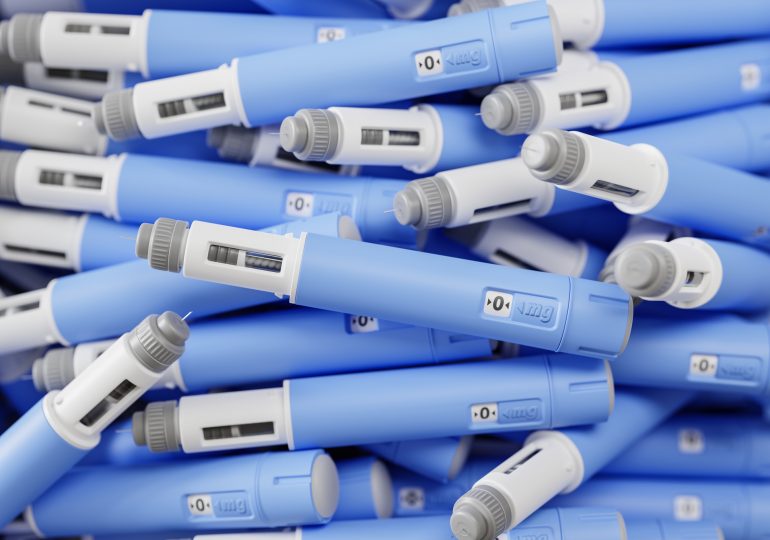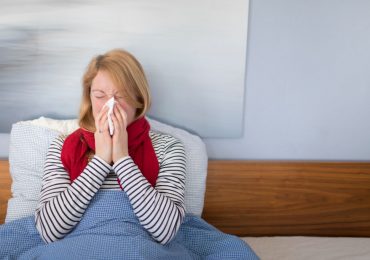We are entering a new era of obesity. The science of weight loss has changed forever: Drugs like Ozempic, Wegovy, and Mounjaro are helping millions shed weight they once thought impossible to lose. At the same time, research is revealing the role of ultra-processed foods in driving obesity, diabetes, and heart disease, even beyond calories alone.
But for all the breakthroughs, governments are stuck. Caught between the pharmaceutical revolution on one side and a trillion-dollar food industry on the other, they face a defining question: Will we settle for treating obesity, or will we finally tackle its causes?
[time-brightcove not-tgx=”true”]
Because here’s the uncomfortable truth: Weight-loss drugs are extraordinary, but they are not a solution on their own.
A scientific breakthrough—and a political dilemma
GLP-1 drugs have been nothing short of miraculous for many. Originally designed for diabetes, they suppress appetite and help people lose 15–20% of their body weight. Patients with Type 2 diabetes are seeing their blood sugar normalize. Rates of heart attacks and strokes are dropping. They may well be beneficial for neurodegenerative diseases like dementia. Some estimates suggest that, if rolled out at scale, GLP-1s could save up to three million lives every year.
Read More: A Battle Is Brewing Over Whole Milk
And now, with cheaper versions beginning to enter the market in India, China, Canada, and other countries, the reach of these drugs is expanding faster than anyone predicted.
But here’s the dilemma: If governments focus on prescriptions instead of prevention, they risk hardwiring obesity into the next generation.
The ultra-processed problem
We now know that ultra-processed foods (UPFs)—industrial combinations of refined starches, seed oils, sugars, additives, and flavorings—don’t just make us gain weight. They change our biology. They spike blood sugar, drive inflammation, disrupt satiety signals, and, in many cases, are engineered to keep us eating well past the point of fullness.
In the U.K. and U.S., more than 60% of the average diet now comes from these foods. That’s school lunches. Hospital vending machines. Cheap supermarket staples. And the problem isn’t just access; it’s environment. These products are everywhere, marketed relentlessly, and often cheaper than whole foods.
Yet the science is not without controversy. Some researchers argue that UPFs are too broad a category to be useful, lumping together yogurts and whole-grain breads with potato chips and candy. Others suggest that much of the harm comes not from “processing” itself but from factors we already understand—sugar, salt, fat, energy density, and even texture and speed of eating. In a landmark study at the National Institutes of Health, people ate 500 more calories a day on an ultra-processed diet than on an unprocessed one—even when nutrients were matched—likely because the foods were softer, faster to eat, and more energy-dense.
The precise mechanisms are still debated. But the bottom line is not. Populations that eat more UPFs get sicker, younger.
GLP-1s can quiet the biological drive to overeat. But they can’t change the reality that children are growing up in a food environment designed to make them sick.
Governments at a crossroads
This is the bind policymakers now face. On one side are pharmaceutical companies pushing for broader access to life-changing weight-loss drugs. On the other, food giants are lobbying hard against restrictions on advertising, warning labels, or taxes on sugar and salt. And in the middle: governments paralyzed by the fear of being accused of running a “nanny state.”
But the real nanny isn’t government; it’s Big Food. It’s the relentless marketing shaping our children’s tastes before they can read. It’s the supermarket aisles engineered to trigger impulse buys. It’s the food environment that keeps us hooked on products designed not to satisfy hunger but to keep us coming back for more.
Read More: Why It’s So Hard to Make School Lunches Healthier
That’s the nanny that quietly robs us of our freedom. Because true freedom isn’t choosing between two forms of processed junk; it’s the ability to hike a mountain without pain, swim a mile, or simply feel comfortable in your own body. Millions of people are denied that freedom every day—not by weak willpower, but by a system designed to make unhealthy living the default. Until we confront that, we’ll keep mistaking constraint for choice.
The result? Incremental change, when what’s needed is bold action.
A playbook for real change
The GLP-1 era should be a catalyst, not a crutch. Here’s what governments could do today to break the cycle:
1. Fix the food environment
Ban junk-food advertising to children. Put clear, visible warning labels on ultra-processed foods, as Chile did with dramatic success. Tax the worst offenders, and use the proceeds to make healthier foods cheaper.
2. Invest in prevention, starting with kids
Teach cooking in every school. Build gardens so children understand where their food comes from. Make daily physical activity as routine as maths and reading. Japan, which has some of the lowest obesity rates in the world, embeds food education into its national curriculum—and it works.
3. Make drugs part of a broader strategy
GLP-1s shouldn’t be a free pass for the food industry, nor should they be used in isolation. They should come with counseling, nutrition education, and long-term support to build healthier habits.
Why it matters
None of this is about shaming individuals. Obesity isn’t a failure of willpower; it’s a predictable response to an environment designed for overconsumption.
The question is whether we want to normalize that environment and rely indefinitely on weekly injections, or whether we want to build a world where fewer people need the drugs in the first place.
Read More: The Heavy Cost of Using Weight-Loss Drugs to Get Skinny
The stakes aren’t just personal. Obesity already costs the U.S. economy an estimated $1.4 trillion a year in lost productivity and health care costs. In the U.K., the figure is almost £100 billion. Those numbers will only grow unless we shift from reactive care to prevention.
A defining choice
I’m not anti-drug. Far from it. GLP-1s are one of the most exciting medical breakthroughs of the last half-century. They will save millions of lives.
But drugs alone won’t create a culture of health. They won’t teach children how to cook. They won’t suddenly make our kids immune to junk-food ads. They won’t stop aggressive lobbying that keeps the least healthy calories the cheapest.
This moment—this collision of science, food, and politics—is a chance to do something bigger: to make the healthy choice the easy choice, for everyone.
If we miss it, we risk creating a future that looks much like our present: where obesity is managed, not prevented.
Leave a comment


